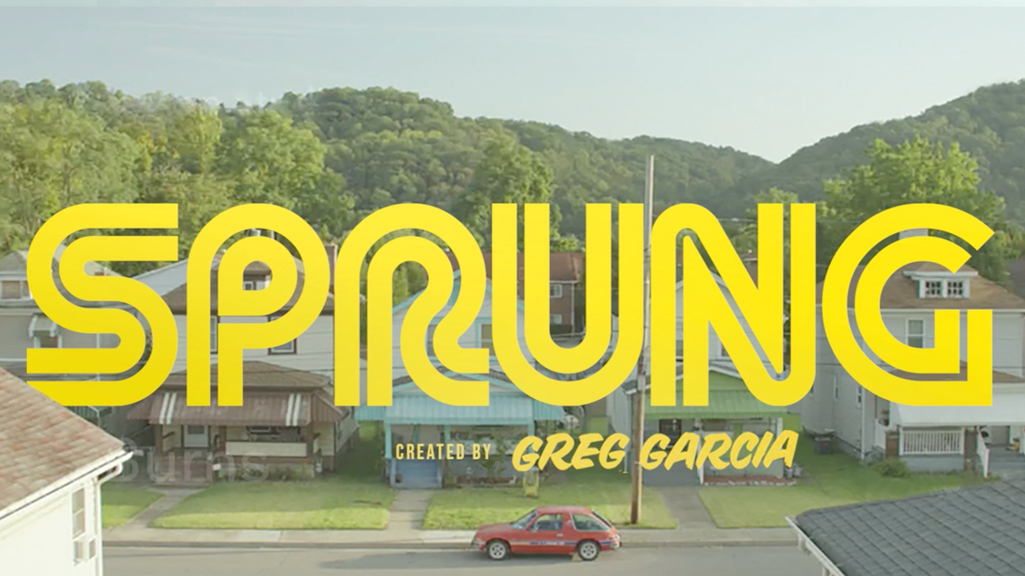Have you ever wondered about the exact moment in time a truly impactful story unfolds? For fans of the X-Men universe, and particularly those who felt the raw emotion of Hugh Jackman's last outing as Wolverine, a common question often pops up: What year is Logan set in? It's a detail that, in a way, really shapes the entire feel of the film, giving its somber narrative a distinct kind of weight.
Knowing the specific year helps us place the story within a broader timeline, even if Logan itself feels quite apart from the usual superhero fare. This film, you see, offers a rather different look at a future that is, well, not exactly bright for mutants. It's a future where our heroes are older, more worn, and struggling in ways we haven't quite seen them before, which makes the year it takes place in pretty important.
So, we're going to take a closer look at this particular setting, exploring why the chosen year matters so much for the characters and the powerful story being told. It's a setting that, in some respects, feels almost like another character in the film, doesn't it? That specific time frame truly colors everything we experience on screen.
- San Antonio Pets Alive
- Biden Stage 9 Cancer
- Rowan Throne Of Glass
- Red And White Shop
- Winn Army Community Hospital
Table of Contents
- The Core Answer: What Year Is Logan Set In?
- A Bleak Future: The World of 2029
- The Weight of Time: Character Arcs and the Year 2029
- Breaking the Mold: Logan's Place in the X-Men Timeline
- Thematic Resonance of the Year
- Why This Specific Year? Behind the Scenes
- People Also Ask
- Looking Back and Forward
The Core Answer: What Year Is Logan Set In?
Alright, let's get straight to the point everyone wants to know. The film Logan is set in the year 2029. This date is not just a random pick; it's actually a very deliberate choice that frames the entire narrative and gives it a distinct, somber tone. It places the story in a near-future setting that feels both familiar and deeply unsettling, you know?
This particular year signifies a time when the world has changed quite a bit, especially for mutants. The X-Men, as a team, are pretty much a distant memory, and the hope that once defined them seems to have faded. It's a future that, in a way, reflects the weariness and despair of its central characters, too it's almost a character itself.
The choice of 2029 allows the story to exist somewhat independently from the tangled web of the main X-Men film continuity. While it acknowledges past events, it mostly carves out its own space, focusing on a final, very personal journey for Wolverine. This approach gives the filmmakers a lot of freedom, which is really quite something.
- Ucla Mathias Botanical Garden
- Chappell Roan Album Cover
- Tom And Jerry Memes
- Radio Coffee And Beer
- Christmas Wonderland Miami
A Bleak Future: The World of 2029
Stepping into the year 2029 as depicted in Logan means entering a world that feels pretty desolate. The vibrant, often action-packed landscape of earlier X-Men films is gone, replaced by a much more grounded and gritty reality. This future is, for all intents and purposes, a dying one for mutantkind, which is a rather stark contrast to what we're used to.
In this specific year, new mutant births have, for some reason, stopped entirely for about two decades. This fact is a central piece of the puzzle, explaining why the few remaining mutants are so precious and why the world feels so empty of their kind. It’s a very quiet apocalypse, if you think about it, not with explosions but with a slow fading away.
Logan himself, the once indestructible Wolverine, is a shadow of his former self in 2029. He's older, his healing factor is failing, and he's constantly in pain, which is something we rarely saw before. He works as a limo driver, just trying to make ends meet and care for an ailing Charles Xavier, who is also very, very unwell.
Professor X, once the most powerful mind on the planet, is suffering from a degenerative brain condition, making his telepathic abilities incredibly dangerous and unpredictable. He needs constant medication to keep his powers in check, and Logan is his primary caregiver. This fragile state of two iconic heroes truly underscores the grim nature of this particular year.
The general environment of 2029 also reflects this decline. The landscape is often dusty and parched, a visual representation of the dying hope. Technology exists, of course, but it feels utilitarian, not flashy, used more for survival and control than for grand advancements. It’s a world that has, in a way, given up on its former glory, which is a bit sad to see.
The year 2029, then, isn't just a date; it's a character in itself, shaping the desperation and the stakes of the story. It's a future where the mighty have fallen, and the last vestiges of a once-proud lineage are struggling to simply exist. This specific time frame really emphasizes the sense of finality that hangs over everything.
The Weight of Time: Character Arcs and the Year 2029
The choice of 2029 as the setting for Logan isn't just about showing a bleak future; it's deeply tied to the personal journeys of its main characters, particularly Logan and Charles. Their weariness, their physical and mental decline, is a direct consequence of the many, many years they have lived and fought. It really shows how much time has passed, doesn't it?
For Logan, the year 2029 represents the culmination of a very long, often painful existence. He's been alive for centuries, fighting countless battles, losing so many people he cared about. By this point, his healing factor, which once made him virtually immortal, is faltering, and the adamantium in his body is slowly poisoning him. This specific year perfectly captures his exhaustion, his desire for peace, and his feeling that his time is almost up, which is a pretty heavy thing to carry.
Professor X's situation in 2029 is equally heartbreaking. He's in his nineties, and his once-brilliant mind is now a source of immense danger due to his seizures. The burden of his telepathic gifts, which he's carried for decades, has finally become too much. This year highlights the tragic irony of his life: a man who dedicated himself to protecting mutants now poses a threat to the very few who remain. It's a rather cruel twist of fate, isn't it?
Then there's Laura, also known as X-23, who represents a different kind of connection to the year 2029. She is a young mutant, a product of a cloning program, and her existence is a direct result of the desperation of this era. Born into a world without new mutants, she is, in a way, a manufactured hope, a last gasp from a dying species. Her presence underscores the urgency of their journey and the potential for a new beginning, even in such a desolate time.
The year 2029 acts as a crucible for these characters, pushing them to their absolute limits. It forces Logan to confront his own mortality and to find a final purpose in protecting Laura. It allows Charles to experience moments of clarity and to guide Logan one last time. This specific time frame allows for a story of legacy, sacrifice, and the passing of the torch, making it truly impactful.
The narrative arc for each character is undeniably shaped by the passage of time leading up to this particular year. It’s not just about what happens in 2029, but also about the cumulative effect of everything that came before, leading them to this very desperate point. That, is that, a lot to think about.
Breaking the Mold: Logan's Place in the X-Men Timeline
One of the most interesting things about Logan's setting in 2029 is how it fits, or rather, doesn't quite fit, into the sprawling and often confusing X-Men cinematic timeline. The X-Men films, as you might know, have a bit of a reputation for their timeline inconsistencies. Logan, however, largely sidesteps this by choosing a future date that allows it to stand on its own two feet, which is pretty clever.
While some fans might try to connect every single detail to the events of X-Men: Days of Future Past or other films, the filmmakers behind Logan made it clear that their primary goal was to tell a compelling, character-driven story. The 2029 setting gives them the freedom to do just that, without being overly constrained by previous continuity. It's a refreshing approach, really.
The film exists in a future that feels like a possible outcome of the X-Men's struggles, but it doesn't demand that every prior film's ending leads directly to it. This allows for a more focused narrative, concentrating on the personal journeys of Logan, Charles, and Laura, rather than needing to explain every single event that led to the decline of mutants. It's a story that feels self-contained, yet still powerful, you know?
By placing the story so far into the future, the film can explore themes of aging, mortality, and legacy without having to worry about how it impacts ongoing storylines or future team-ups. This specific year allows the movie to be a definitive farewell to Hugh Jackman's Wolverine, a send-off that feels complete and earned. It's almost like a separate, very poignant chapter, isn't it?
The year 2029, therefore, is not just a date; it's a narrative device that allows Logan to break free from the traditional superhero movie mold. It lets the film be a gritty, emotional drama first and a superhero movie second, which is a big part of why it resonated so deeply with audiences. This particular setting truly sets it apart.
It's a bold move, this decision to largely disregard the more intricate timeline details for the sake of a stronger story. And, honestly, it paid off in a very big way, creating a film that stands tall on its own merits, even if it exists within a larger, sometimes messy, universe. It really is quite a unique film, in that case.
Thematic Resonance of the Year
The choice of 2029 for Logan's setting is incredibly important for the themes the film explores. It’s not just a backdrop; it’s an active element that amplifies the story’s core messages. This specific year really brings home the ideas the filmmakers wanted to convey, too it's almost like a character itself.
First and foremost, 2029 screams "finality." It's a future where the X-Men are gone, where mutants are nearly extinct, and where our heroes are at the end of their ropes. This sense of an era ending is palpable throughout the film, making every action, every sacrifice, feel incredibly significant. It’s the last stand, in a way, which is pretty powerful.
The year also underscores themes of mortality and aging. Logan and Charles, once symbols of enduring strength, are now frail, vulnerable, and facing their own inevitable ends. This humanization of iconic figures is made possible by showing them decades into a challenging future, where the weight of time has taken its toll. It’s a very raw and honest portrayal, isn't it?
Despite the bleakness, 2029 also carries a subtle undercurrent of hope, primarily through the character of Laura. She represents the potential for a new generation, a chance for mutantkind to perhaps, one day, rise again. The year, therefore, is not just about an end, but also about the fragile beginning of something new, a glimmer in the darkness.
The desolate future of 2029 also highlights the idea of legacy. What do these heroes leave behind? What was their struggle for? The film suggests that their fight wasn't in vain, that even in a dying world, their sacrifices paved the way for a future generation, however small. It’s a very profound question the film asks, isn't it?
The specific setting of 2029 allows Logan to transcend the typical superhero genre and become a poignant character study about loss, redemption, and the enduring human spirit. It’s a future that forces its characters, and the audience, to confront difficult truths about life, death, and what it means to be a hero when everything is falling apart. That, is that, a lot to take in.
Why This Specific Year? Behind the Scenes
When filmmakers decide on a setting for a story, especially one as anticipated as Logan, there's usually a lot of thought that goes into it. The choice of 2029 wasn't just pulled out of a hat; it was a very deliberate decision that served multiple purposes for the movie's creators. It's pretty interesting to consider the reasons behind it, you know?
One major reason was to create a sense of distance from the main X-Men film continuity. By setting it so far in the future, the film could largely avoid the need to reconcile every plot point or character appearance from previous movies. This gave director James Mangold and his team the freedom to tell a standalone story, one that didn't rely on prior knowledge of every single X-Men event. It's a smart way to approach things, actually.
The year 2029 also allowed for the portrayal of Logan and Charles Xavier as truly aged and vulnerable. To show Wolverine's healing factor failing and Professor X's mind deteriorating, a significant passage of time was necessary. This specific year provided enough distance from their younger, more powerful days to make their current state believable and impactful. It really underscores their decline, doesn't it?
Furthermore, the near-future setting allowed the film to explore a desolate, almost Western-like aesthetic without feeling completely fantastical. The world of 2029 in Logan feels grounded, like a believable progression from our present, rather than a far-flung sci-fi dystopia. This helped maintain the gritty, realistic tone the filmmakers were aiming for, which is pretty important for a movie like this.
The choice of 2029 also helped to emphasize the theme of obsolescence. In this future, mutants are a dying breed, and heroes like Wolverine are no longer needed, or perhaps, no longer able to fight the good fight. This specific year highlights the idea that even legends can fade, and that sometimes, the greatest battles are fought against time itself. It's a very poignant idea, really.
Ultimately, the year 2029 was chosen because it perfectly served the film's narrative and thematic goals. It allowed for a raw, emotional, and self-contained story that honored the characters while also giving them a fitting, and very human, farewell. It's a testament to the filmmakers' vision, in some respects.
People Also Ask
Here are some common questions people often have about the setting of Logan:
Is Logan part of the main X-Men timeline?
While Logan acknowledges past events and characters from the X-Men universe, it largely functions as a standalone story set in a possible future. The filmmakers intended it to be a more character-focused, definitive end for Wolverine rather than strictly adhering to every detail of the complex X-Men timeline. It's a bit of its own thing, really.
What happened to mutants before Logan?
In the world of Logan, set in 2029, new mutant births have ceased for nearly two decades. The film suggests that an organization called Transigen, or perhaps other factors, played a role in the near extinction of mutants. The details
- Tornado Warning Issued For Branch County Thunderstorm
- Rowan Throne Of Glass
- Family Guy Peter Griffin
- Ucla Mathias Botanical Garden
- Masons Famous Lobster Rolls



Detail Author:
- Name : Prof. Brando Roob
- Username : nikolaus.kendra
- Email : maci32@bechtelar.com
- Birthdate : 1988-12-31
- Address : 72984 Cullen Points Port Hermanville, VA 33438-0528
- Phone : +18314723527
- Company : Bernhard, Schowalter and Herzog
- Job : Insulation Installer
- Bio : Minus sunt ut omnis odio quasi voluptatem. Expedita id quo aut. Quos ratione sapiente repudiandae occaecati natus facilis repudiandae blanditiis. Eius eum distinctio quidem labore voluptas.
Socials
tiktok:
- url : https://tiktok.com/@madyson_real
- username : madyson_real
- bio : Excepturi sit sunt eveniet sed nulla.
- followers : 5176
- following : 2571
twitter:
- url : https://twitter.com/kirlin1972
- username : kirlin1972
- bio : Vel quis rem quia vel. Reprehenderit ipsa unde debitis odio et consequatur recusandae.
- followers : 2090
- following : 2089

